Tuesday, November 12, 2024
"Tips for Practicing Yoga Poses Safely and Effectively"
"Fundamental Principles of Tai Chi"
"Tai Chi"
1. Verifiable Foundation of Jujitsu
2. Crucial Standards of Yoga
A. Yin and Yang
B. Unwinding and Stream
C. Persistent Development
D. Appropriate Arrangement and Stance
3. Advantages of Rehearsing Jujitsu
A. Upgraded Equilibrium and Coordination
B. Expanded Adaptability and Strength
C. Stress Decrease and Mental Lucidity
D. Worked on Cardiovascular Wellbeing
E. Torment The executives
4. Key Developments in Kendo
A. Getting a handle on the Bird's Tail
B. Shock the Monkey
C. Wave Hands Like Mists
D. Brush Knee and Contort Step
5. Styles of Jujitsu
A. Chen Style
B. Yang Style
C. Wu Style
D. Sun Style
6. Ways to rehearse Judo Actually
A. Center around the Present
B. Practice Reliably
C. Take as much time as is needed
D. Look for Direction
E. Wear Open to Apparel
7. Uses of Jujitsu in Present day Wellbeing and Health
End;
Monday, November 11, 2024
"Purpose and versatility in fitness routines"
"Stability Ball Exercises"
1. Understanding Strength Ball Activities
Mechanics of Steadiness Ball Activities
Dynamic Surface:
Center Actuation:
2. Advantages of Security Ball Activities
A. Improved Center Strength
B. Further developed Equilibrium and Coordination
C. Full-Body Muscle Commitment
D. Adaptability and Scope of Movement
E. Low-Effect Strength Preparing
3. Famous Strength Ball Activities
A. Steadiness Ball Crunches
Execution:
Benefits:
B. Solidness Ball Board
Execution:
Benefits:
C. Strength Ball Wall Squats
Execution:
Benefits:
D. Back Expansion on Soundness Ball
Execution:
Benefits:
E. Hamstring Twists
Execution:
Benefits:
F. Solidness Ball Pike
Execution:
Benefits:
4. High level Varieties for Added Challenge
A. Security Ball Push-Ups
B. One-Legged Strength Ball Squats
C. Single-Leg Extensions
5. Pragmatic Tips for Compelling Use
A. Pick the Right Ball Size
B. Keep up with Legitimate Structure
C. Utilize a Steady Climate
D. Progress Continuously
6. Wellbeing Contemplations
A. Guarantee Appropriate Expansion
B. Clear Your Space
C. Pay attention to Your Body
D. Begin with Management
End;
"Walking in a straight line with the heel of one foot touching the toe of the other foot at each step"
"Heel-to-Toe Walk (Tandem Walk)"
The heel-to-toe walk, otherwise called the pair walk, is a basic equilibrium practice that assumes a fundamental part in further developing steadiness and coordination. This exercise includes setting the impact point of one foot straightforwardly before the toes of the other foot in an orderly fashion while strolling. However apparently basic, the heel-to-toe walk offers significant advantages, particularly for those trying to upgrade their stride, further develop balance, and diminish the gamble of falls. This examination will cover the mechanics, benefits, varieties, procedures, target gatherings, and security contemplations related with the heel-to-toe walk.
1. Understanding the Heel-to-Toe Walk
The impact point to-toe walk centers around keeping a consistent stride while setting one foot straightforwardly before the other. It underlines control, coordination, and the capacity to keep up with dependability during development. The activity is many times utilized in non-intrusive treatment, balance preparing projects, and fall counteraction drives.
Mechanics of the Heel-to-Toe Walk
Beginning Position:
Stand tall with feet near one another. Keep the arms loose along the edges to start.
Execution:
Forward-moving step by putting the impact point of one foot straightforwardly before the toes of the contrary foot. Keep a straight line as you walk.
Commitment:
Guarantee that each step is slow and ponder to initiate stabilizer muscles and keep up with balance.
Look:
Spotlight on a proper point ahead as opposed to peering down to assist with keeping up with security and stance.
2. Advantages of the Heel-to-Toe Walk
The couple walk offers a scope of physical and neurological advantages, making it a significant expansion to adjust preparing regimens. These advantages incorporate superior equilibrium and walk, expanded coordination, fortified stabilizer muscles, and fall counteraction.
A. Upgraded Equilibrium and Soundness
The heel-to-toe walk is one of the best activities for creating and keeping up with balance. By zeroing in on a thin base of help, the body's stabilizer muscles are locked in, particularly those in the lower legs and lower legs. This prompts further developed balance during both static and dynamic developments, which is fundamental for exercises like strolling on lopsided surfaces or exploring restricted spaces.
B. Further developed Stride and Strolling Mechanics
Strolling with the impact point of one foot contacting the toes of the other advances appropriate strolling mechanics. It empowers an upstanding stance, appropriate foot arrangement, and controlled development. This sort of preparing assists people with keeping a reliable and adjusted stride, which is basic for everyday exercises and versatility.
C. Coordination and Neuromuscular Control
Coordination is a fundamental part of in general engine capability. The couple walk requires the mix of visual, vestibular, and proprioceptive frameworks to keep up with balance while strolling in an orderly fashion. This neuromuscular coordination is gainful for individuals who need to further develop response times and development smoothness.
D. Reinforced Lower Body and Center Muscles
The activity draws in the lower body muscles, including the calves, quadriceps, hamstrings, and gluteal muscles. The center muscles are likewise enacted as they help to keep up with stance and dependability. This mix of muscle commitment adds to in general lower body strength and center security, which is pivotal for injury avoidance and proficient development.
E. Fall Anticipation
For more established grown-ups, falls are a main source of injury and hospitalization. The heel-to-toe walk assists develop with adjusting and fortitude, diminishing the gamble of falls. Further developed coordination and proprioception assist people with getting themselves all the more really during surprising changes in balance, for example, stumbling or slipping.
3. Varieties of the Heel-to-Toe Walk
To adjust the heel-to-toe stroll for various ability levels or explicit preparation objectives, different alterations can be made. These varieties increment the trouble and target various parts of equilibrium and coordination.
A. Heel-to-Toe Stroll with Eyes Shut
Shutting the eyes eliminates visual criticism, constraining the body to depend more on proprioception and the vestibular framework. This expands the test and upgrades tactile mindfulness, which can work on generally speaking equilibrium and strength.
B. Heel-to-Toe Stroll on an Unsound Surface
Playing out the activity on a froth mat or equilibrium pillar presents an unsound surface, requiring more noteworthy initiation of the stabilizer muscles. This variety is especially useful for competitors and those looking to work on their dynamic equilibrium.
C. Pair Stroll with Head Developments
Adding head developments, like diverting the head from one side to another, builds the test by connecting with the vestibular framework. This is helpful for people who need to work on their equilibrium in circumstances where they need to glance around while moving.
D. Heel-to-Toe Stroll with Arm Developments
Consolidating arm developments, like raising the arms above or extending them to the sides, can build the intricacy of the activity. This connects with the center and further tests balance.
E. In reverse Heel-to-Toe Walk
Switching the course of the walk — performing it in reverse rather than forward — requests much more coordination and mindfulness. This variety helps train the cerebrum and body to deal with unforeseen directional changes.
4. Procedures for Dominating the Heel-to-Toe Walk
Legitimate method is fundamental for augmenting the advantages of the heel-to-toe walk and limiting the gamble of injury. Here are a few vital procedures for dominating this activity:
A. Keep an Upstanding Stance
Keep the back straight and the shoulders loose. Abstain from inclining forward or in reverse, as this can disturb balance and diminish the viability of the activity. Connecting with the center muscles keeps up with this arrangement.
B. Center around a Point Ahead
Zeroing in on a decent point somewhere far off can assist with keeping up with balance and diminish the propensity to peer down at the feet. This viewable sign helps with settling the body's situation.
C. Step Gradually and Intentionally
Racing through the activity can think twice about and lessen the advantages. All things being equal, take slow, conscious advances, guaranteeing that the impact point of one foot contacts the toes of the other with each step.
D. Keep the Arms Loose
While certain varieties consolidate arm developments for added trouble, the standard heel-to-toe walk ought to be performed with loosened up arms. This forestalls extra strain and assists the body with zeroing in on balance.
5. Target Populaces for the Heel-to-Toe Walk
The heel-to-toe walk is gainful for various people, including:
A. More established Grown-ups
As individuals age, keeping up with balance turns out to be progressively critical to forestall falls. The heel-to-toe walk assists more seasoned grown-ups with developing fortitude, further develop proprioception, and diminish the probability of wounds related with falls.
B. Competitors
Competitors frequently need great equilibrium and coordination to perform well in their particular games. The heel-to-toe walk fosters the neuromuscular control important for speedy directional changes, arrivals, and single-leg developments.
C. People in Recovery
For those recuperating from lower-body wounds, the heel-to-toe walk can be a powerful piece of a recovery program. It supports recovering muscle strength and joint security and works on the capacity to perform ordinary exercises.
D. Novices in Equilibrium Preparing
Individuals new to adjust preparing can utilize the heel-to-toe stroll as a passage level activity to fabricate essential equilibrium abilities. It is straightforward enough for amateurs yet successful in advancing critical upgrades.
6. Wellbeing and Precautionary measures
While the heel-to-toe walk is for the most part protected, it is fundamental to follow specific precautionary measures to limit gambles:
A. Utilize a Steady Climate
Play out the activity on a non-tricky surface and guarantee there is sufficient room to uninhibitedly move. For the individuals who are unstable, rehearsing close to a wall or seat for help can give added wellbeing.
B. Begin Gradually
For people with balance difficulties or more seasoned grown-ups, it is critical to begin gradually and continuously increment the trouble level. Start with more limited distances and develop as certainty and capacity get to the next level.
C. Keep away from Weakness
Weariness can influence equilibrium and coordination. Guarantee that you are all around rested prior to endeavoring balance works out, as drained muscles can prompt unfortunate structure and expanded hazard of falls.
D. Warm Up
A legitimate warm-up that incorporates dynamic stretches or light cardio can set up the muscles and joints for balance works out. This decreases the gamble of strain or injury.
End;
The heel-to-toe walk (pair walk) is a flexible and successful activity that upgrades equilibrium, coordination, and stride security. By focusing on the lower body and center, this exercise upholds by and large actual wellbeing and helps in fall counteraction. With basic adjustments and consideration regarding appropriate procedure, the heel-to-toe walk can be adjusted to suit different ability levels and preparing objectives. Its significance in balance preparing projects and recovery makes it an essential part of utilitarian wellness.
"Improves static balance and strengthens the lower body"
"Single-Leg Stance"
1. Grasping the Single-Leg Position
Mechanics of the Single-Leg Position
Beginning Position:
Execution:
Commitment:
2. Advantages of the Single-Leg Position
A. Further developed Equilibrium and Dependability
B. Upgraded Proprioception
C. Lower Body Reinforcing
D. Center Commitment
E. Injury Anticipation
3. Varieties to Improve the Single-Leg Position
A. Single-Leg Position with Eyes Shut
B. Single-Leg Position on a Shaky Surface
C. Arm Developments
D. Weighted Single-Leg Position
E. Leg Developments
4. Strategies for Dominating the Single-Leg Position
A. Draw in the Center
B. Keep up with Appropriate Stance
C. Center around a Proper Point
D. Practice Continuously
E. Use Backing While Beginning
5. Who Can Profit from the Single-Leg Position?
A. More seasoned Grown-ups
B. Competitors
C. Recovery Patients
6. Wellbeing and Safeguards
A. Appropriate Footwear
B. Warm-Up Ahead of time
C. Try not to Overstrain
End;
Sunday, November 10, 2024
"Strength Preparing: An Extensive Aide"
"Strength Training"
Strength preparing, otherwise called obstruction preparing or weightlifting, is one of the best ways of working on generally wellness, assemble muscle, improve digestion, and increment practical strength. Whether you want to acquire bulk, get in shape, work on athletic execution, or just stay solid, strength preparing is a fundamental part of a balanced wellness schedule. In this aide, we'll investigate the advantages of solidarity preparing, the kinds of activities, how to structure an exercise, and ways to expand results.
What is Strength Preparing?
Strength preparing includes utilizing opposition (from loads, obstruction groups, machines, or bodyweight) to challenge and reinforce muscles. The vital guideline behind strength preparing is dynamically over-burdening muscles, meaning you progressively increment the weight or obstruction over the long run to invigorate muscle development and strength variations. Dissimilar to cardiovascular activity, which principally focuses on the heart and lungs, strength preparing centers around the muscles, ligaments, and bones.
Advantages of Solidarity Preparing
Muscle Development and Strength
Strength preparing animates muscle filaments to develop by making tiny tears in the muscle tissue. As the muscle fixes, it increases and more grounded. This interaction is known as hypertrophy.
It works on generally speaking strength, making regular exercises like lifting, conveying, or climbing more straightforward and less burdening on your body.
Fat Misfortune and Expanded Digestion
Building muscle expands your basal metabolic rate (BMR), meaning your body consumes more calories very still. More bulk additionally further develops insulin awareness, which can assist with fat misfortune and body structure.
Strength preparing has been displayed to increment calorie consume for quite a long time after an exercise because of the overabundance post-practice oxygen utilization (EPOC) impact, otherwise called the "afterburn"
Worked on Bone Thickness
Weight-bearing activities, similar to strength preparing, help to increment bone thickness and diminish the gamble of osteoporosis. The mechanical pressure put on bones during obstruction practices animates bone-shaping cells, prompting more grounded bones.
This advantage turns out to be particularly significant as we age, as bone thickness normally declines after around the age of 30.
Upgraded Emotional wellness
Ordinary strength preparing has been displayed to further develop temperament and mental prosperity by delivering endorphins, which are the body's regular "warm hearted" chemicals.
It additionally assists with overseeing pressure, diminishing side effects of gloom and tension, and helping self-assurance.
Better Stance and Practical Wellness
Fortifying the muscles of the center, back, and legs further develops stance and body arrangement, lessening the gamble of creating outer muscle issues.
Useful wellness alludes to the capacity to perform regular errands productively and without torment. Strength preparing further develops equilibrium, coordination, and development designs, which are indispensable for utilitarian wellbeing.
Kinds of Solidarity Preparing Activities
Strength preparing activities can be assembled into a few classes in light of the sort of gear utilized and the muscle bunches they target.
1. Bodyweight Activities
Models:
Push-ups, squats, rushes, boards, plunges, burpees, pull-ups.
Bodyweight practices utilize your own body as obstruction, making them an extraordinary choice for fledglings or for the individuals who don't approach hardware. They can be adjusted for various wellness levels and are profoundly adaptable.
2. Free Loads
Models:
Free weights, free weights, iron weights.
Free loads consider an extensive variety of movement and connect with settling muscles that assist with further developing coordination and equilibrium. They are great for developing fortitude and hypertrophy and can be utilized for compound or disconnection works out.
Compound Activities:
These work different muscle bunches all the while and are in many cases considered the underpinning of solidarity preparing. Models incorporate squats, deadlifts, and seat presses.
Segregation Activities:
These objective a particular muscle bunch. Models incorporate bicep twists, rear arm muscle augmentations, and leg expansions.
3. Opposition Groups
Models:
Band squats, united columns, parallel band strolls.
Opposition groups are lightweight and compact apparatuses that give variable obstruction, meaning the pressure increments as the band is extended. They are perfect for fledglings, recovery, and portability activities, and they can be utilized to target explicit muscle gatherings.
4. Machines
Models:
Leg press, chest press, lat pulldown, link machines.
Weight machines guide your development along a proper way, making them simpler to utilize and more secure for novices. They can likewise be gainful for disengaging explicit muscles, particularly in the event that you are hoping to zero in on a specific muscle bunch.
5. Other Gear
Models:
Medication balls, dependability balls, suspension mentors (e.g., TRX), sleds.
Different apparatuses can be integrated into strength preparing to change it up or challenge steadiness and coordination. For instance, TRX preparing utilizes suspension lashes to make practices that target center strength and soundness.
Organizing a Strength Preparing Exercise
A very much organized strength preparing exercise includes a mix of various activities to target different muscle gatherings, enhance results, and limit the gamble of injury. The following is an example structure for a full-body strength exercise:
Warm-Up (5-10 minutes)
Start with dynamic stretches or light vigorous activity (e.g., lively strolling or running, cycling, or hop rope) to increment pulse, blood stream to muscles, and joint portability.
Incorporate portability practices for key joints like the hips, shoulders, and lower legs, particularly in the event that you're doing intensify lifts.
Compound Developments (30-40 minutes)
Begin with compound activities that target enormous muscle gatherings (e.g., squats, deadlifts, seat press, above press, and pull-ups). These activities enlist various muscles without a moment's delay and require more energy, so they ought to be finished toward the start of your exercise when you're freshest.
Reps and Sets:
A typical rep range for strength is 4-6 arrangements of 4-6 reps with a significant burden. For hypertrophy (muscle development), go for the gold arrangements of 8-12 reps.
Extra or Disengagement Activities (10-20 minutes)
In the wake of performing compound lifts, incorporate some disengagement activities to target more modest muscle gatherings, for example, bicep twists, rear arm muscle expansions, leg twists, or calf raises.
Detachment practices for the most part utilize moderate loads and higher rep ranges (10-15 reps).
Center Work (5-10 minutes)
Reinforcing your center is fundamental for generally speaking steadiness and execution. Integrate center activities like boards, Russian turns, leg raises, or link woodchoppers.
Cool-Down and Extending (5-10 minutes)
Get done with static extending to further develop adaptability and help in muscle recuperation. Center around the significant muscle bunches worked during the meeting, holding each stretch for 20-30 seconds.
The most effective method to Advance in Strength Preparing
The following are a couple of ways of guaranteeing you are gaining ground:
Increment Weight:
Step by step increment the opposition you're utilizing to challenge your muscles. A typical system is adding 2.5 to 5 pounds to your lifts each 1 fourteen days, contingent upon your ongoing strength level.
Increment Reps or Sets:
On the off chance that you can finish the upper scope of your endorsed rep range (e.g., 12 reps when your objective is 8-12), you can either add more reps or increment the quantity of sets (e.g., from 3 to 4 sets).
Further develop Structure and Scope of Movement:
Further developing procedure and expanding the profundity of activities (e.g., going further into a squat or bringing down the bar further in a seat press) can add power to your gym routine even without adding more weight.
Change the Rhythm:
Dial back the unpredictable (bringing down) piece of the lift to increment time under pressure, which can be viable for hypertrophy.
Deload:
Each 4 a month and a half, consider lessening your preparation volume and power for seven days to permit your muscles and sensory system to completely recuperate.
Wellbeing Contemplations
Structure Over Weight: Focus on legitimate structure over lifting heavier loads to forestall injury. Guarantee your strategy is right prior to expanding the heap.
Rest and Recuperation:
Permit your muscles sufficient recuperation between exercises. Go for the gold long periods of rest for a similar muscle gathering to fix and develop. Overtraining can prompt injury and mishaps.
Begin Slow:
On the off chance that you're new to strength preparing, start with lighter loads and spotlight on dominating fundamental activities prior to moving to further developed lifts.
End;
Strength preparing is an amazing asset that can upgrade actual wellbeing, mental prosperity, and useful limit. It gives many advantages, from expanding bulk and solidarity to working on bone thickness and digestion. Whether you're simply beginning or are an accomplished lifter, developing a fair and moderate fortitude preparation routine can assist you with accomplishing long haul wellbeing and wellness objectives. With consistency, tolerance, and appropriate structure, strength preparing can genuinely change your body and life.
Saturday, November 9, 2024
"Forestalling and Overseeing Hypertension Normally: Tips and Systems"
"Preventing and Managing High Blood Pressure Naturally"
Hypertension (otherwise called hypertension) is frequently called the "quiet executioner" since it ordinarily has no undeniable side effects until it causes serious medical problems. It's a main gamble factor for coronary illness, stroke, kidney harm, and even dementia. Fortunately hypertension can be overseen and forestalled through way of life changes, especially normal intercessions like eating routine, work out, stress the executives, and great rest cleanliness.
In this article, we'll investigate how you can assume command over your circulatory strain normally and bring down your gamble of cardiovascular sicknesses without fundamentally depending on meds.
What is Hypertension?
Pulse is the power of blood against the walls of your veins as your heart siphons it around the body. It is estimated with two numbers:
Systolic tension (the upper number) - the strain when your heart beats and siphons blood.
Diastolic tension (the lower number) - the strain when your heart is very still between thumps.
Typical circulatory strain is normally 120/80 mmHg or lower. Hypertension is by and large characterized as having a perusing reliably over 130/80 mmHg. Determined hypertension builds the burden on your heart and veins, prompting an assortment of serious unexpected problems.
Regular Ways Of forestalling and Oversee Hypertension
Luckily, you don't have to depend exclusively taking drugs to deal with your pulse. By making a couple of way of life transforms, you can fundamentally bring down your gamble and keep up with sound levels.
1. Embrace a Heart-Sound Eating routine
A decent eating routine is critical in overseeing circulatory strain normally. Here are a few dietary rules and food sources to zero in on:
- The Scramble Diet (Dietary Ways to deal with Stop Hypertension)
The Scramble diet is a demonstrated eating plan planned explicitly to forestall and oversee hypertension. It stresses:
Products of the soil:
Go for the gold servings every one of leafy foods day to day. These are wealthy in potassium, which balances sodium's consequences for circulatory strain.
Entire grains:
Decide on entire grains like oats, quinoa, earthy colored rice, and entire wheat over refined grains.
Lean proteins:
Incorporate sources like fish (particularly greasy fish like salmon), poultry, beans, and nuts.
Low-fat dairy:
Pick dairy items with lower fat substance like skim milk or low-fat yogurt.
Decreased sodium consumption:
Cutoff your sodium admission to 1,500 mg each day (about a portion of a teaspoon of salt). Sodium adds to expanded pulse, so it's crucial for cut back on handled and bundled food sources, which are much of the time high in sodium.
- Potassium-Rich Food sources
Potassium helps balance the impacts of sodium in the body. Food varieties high in potassium include:
Bananas
Spinach
Yams
Avocados
Tomatoes
Beans and lentils
Oranges
- Magnesium and Fiber
Food sources wealthy in magnesium (like salad greens, nuts, seeds, and entire grains) and fiber (like oats, beans, and vegetables) can assist with loosening up veins and further develop flow, the two of which add to more readily circulatory strain guideline.
- Limit Handled Food varieties and Sugar
Lessen utilization of handled food varieties, sweet beverages, cheap food, and high-fat tidbits. These can cause weight gain, irritation, and an unevenness in electrolytes that can spike pulse.
2. Work-out Routinely
Customary actual work is one of the best ways of overseeing circulatory strain. Indeed, even moderate-power exercise can assist with bringing down both systolic and diastolic pulse.
- Hold back nothing Daily
The American Heart Affiliation suggests somewhere around 150 minutes of moderate-power practice or 75 minutes of energetic activity each week. This can include:
Lively strolling
Running or running
Cycling
Swimming
Moving
Strength preparing (2-3 times each week)
Practice assists your heart with becoming more grounded and more productive, which can bring down the power of blood stream, consequently decreasing circulatory strain. Oxygen consuming activity (like strolling, running, or swimming) has been demonstrated to be especially successful in bringing down hypertension.
3. Deal with Your Pressure
Stress is one of the main supporters of hypertension. At the point when focused, your body discharges chemicals like cortisol and adrenaline, which can cause your pulse and circulatory strain to rise. Persistent pressure can likewise add to unfortunate way of life propensities like gorging, liquor utilization, and smoking, which further lift circulatory strain.
- Stress-Decrease Methods
To oversee pressure, take a stab at integrating the accompanying unwinding rehearses into your everyday practice:
Care reflection:
Rehearsing care or contemplation for 10-15 minutes everyday can assist with bringing down pressure and diminish circulatory strain.
Profound breathing activities:
Slow, full breaths can assist with enacting the parasympathetic sensory system, which assists with bringing down circulatory strain.
Yoga:
Yoga joins actual stances, breathing activities, and care to advance unwinding and further develop heart wellbeing.
Moderate muscle unwinding (PMR):
This method includes straining and afterward loosening up various muscle bunches in your body to assuage pressure.
4. Get Sufficient Quality Rest
Constant lack of sleep can add to hypertension, as it builds the body's pressure reaction and irritation. Grown-ups ought to hold back nothing 9 hours of rest every night to help generally speaking wellbeing and pulse guideline.
- Further develop Rest Cleanliness
Great rest cleanliness is fundamental for quality rest:
Lay out a predictable rest plan by hitting the sack and awakening simultaneously every day.
Stay away from caffeine, liquor, and huge feasts near sleep time, as they can disturb rest.
Make a quiet, dim rest climate by decreasing commotion, utilizing power outage draperies, and restricting screen time before bed.
5. Limit Liquor Utilization
While a modest quantity of liquor may be acceptable as far as certain individuals, over the top drinking can raise pulse and impede circulatory strain drugs. It's prescribed to restrict liquor to something like one beverage each day for ladies and two for men.
6. Stop Smoking
Smoking and tobacco use contribute altogether to hypertension by expanding pulse and harming veins. The nicotine in cigarettes makes veins contract, prompting an expansion in pulse. Stopping smoking can bring down circulatory strain and lessen your gamble of coronary illness and stroke.
7. Keep a Solid Weight
Being overweight or hefty overburdens the heart and expands the gamble of growing hypertension. In any event, losing a modest quantity of weight — 5 to 10% of your complete body weight — can fundamentally bring down your circulatory strain.
- Sound Weight reduction Tips
To get more fit in a solid, feasible way:
Center around segment control and abstain from indulging.
Integrate all the more entire food sources into your eating regimen (organic products, vegetables, lean proteins).
Consolidate cardiovascular activity with strength preparing to support digestion and consume fat.
Go for the gold, weight reduction (1-2 pounds each week).
8. Increment Omega-3 Unsaturated fats
Omega-3 unsaturated fats have calming properties that can assist with bringing down pulse and further develop heart wellbeing. These sound fats are found in food varieties like:
Greasy fish (salmon, mackerel, sardines)
Chia seeds
Flaxseeds
Pecans
Hemp seeds
On the off chance that you're not getting sufficient omega-3s from your eating regimen, you should seriously mull over taking a fish oil supplement (talk with your medical services supplier first).
9. Spices and Enhancements
Certain spices and enhancements have been displayed to assist with lessening pulse normally:
Garlic:
Garlic has been displayed to decrease both systolic and diastolic pulse. New garlic or matured garlic enhancements can be advantageous.
Hibiscus tea:
Drinking hibiscus tea routinely may assist with lessening circulatory strain because of its regular properties.
Beetroot:
Beetroot juice is wealthy in nitrates, which can assist with bringing down circulatory strain by further developing vein capability.
CoQ10:
Coenzyme Q10 is a cell reinforcement that can assist with decreasing circulatory strain by working on the capability of veins.
Magnesium:
Magnesium loosens up veins and can assume a part in overseeing hypertension.
Prior to taking any enhancements, talk with a medical care supplier to guarantee they're protected and fitting for you.
End;
Overseeing and forestalling hypertension doesn't need to mean depending exclusively on drugs. By going with better way of life decisions — like embracing a supplement rich eating routine, remaining dynamic, overseeing pressure, further developing rest, and stopping hurtful propensities — you can essentially bring down your circulatory strain and diminish your gamble of coronary illness and stroke.
Indeed, even little changes in your day to day schedule can hugely affect your heart wellbeing. By assuming responsibility for your wellbeing, you're not simply forestalling hypertension; you're likewise advancing a more extended, better life. Continuously counsel your medical services supplier prior to making any huge way of life changes, particularly assuming that you have existing ailments.











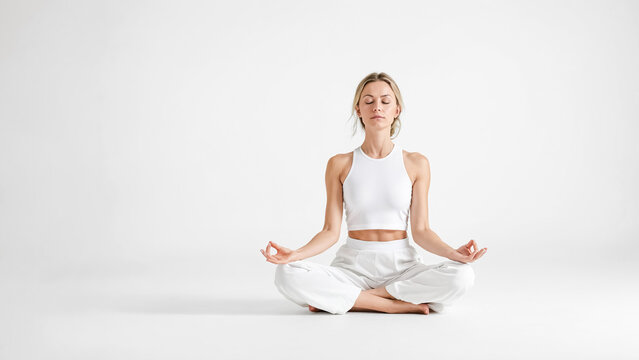
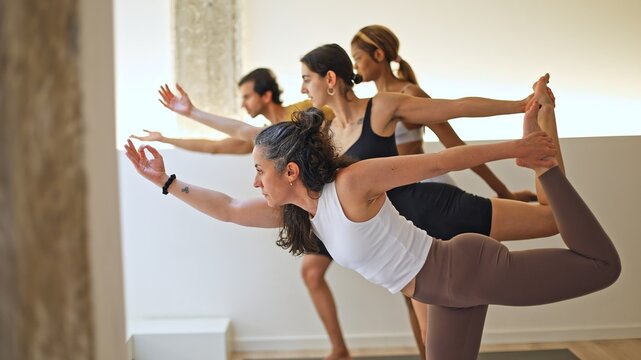
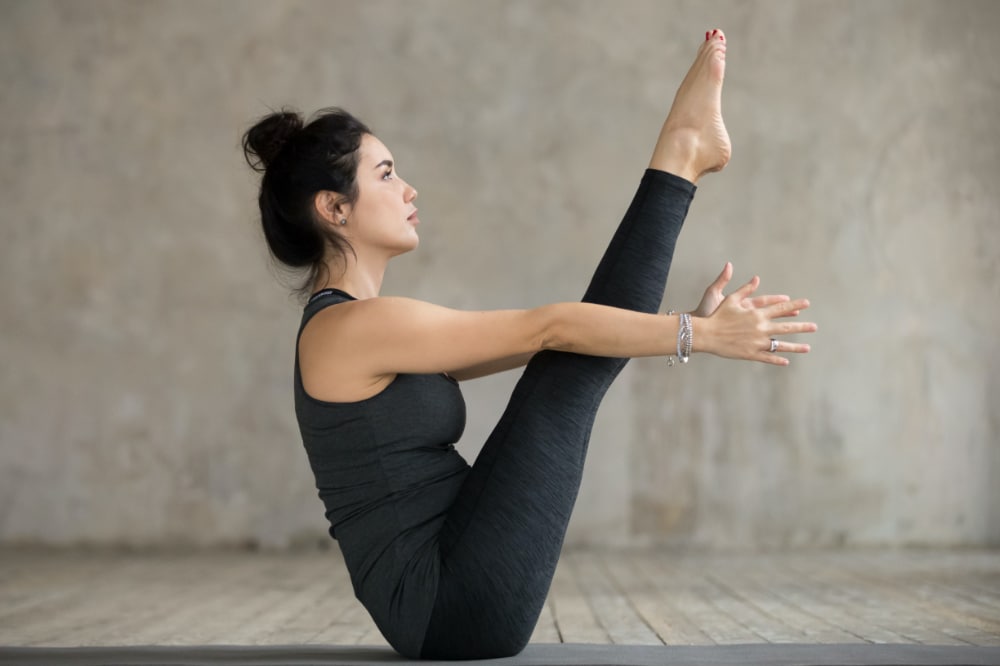

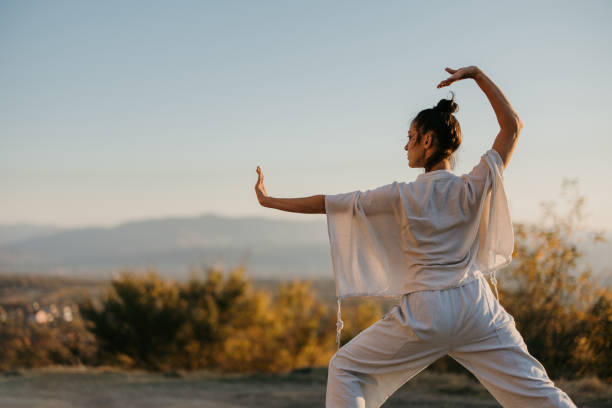

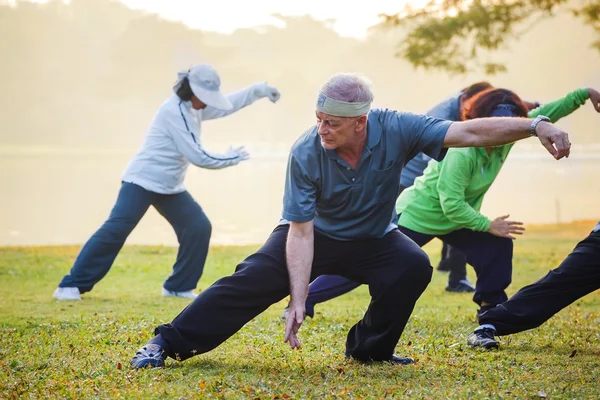
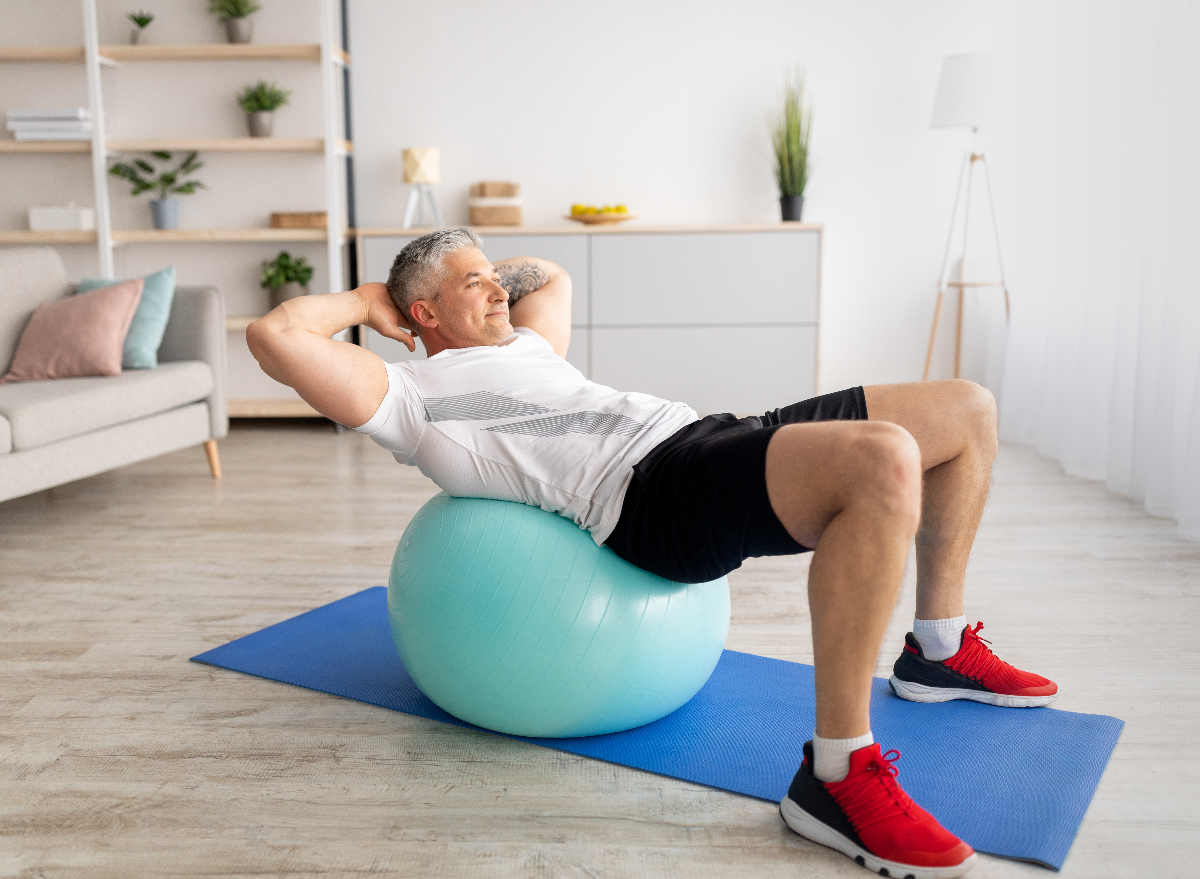
:max_bytes(150000):strip_icc()/GettyImages-922551728-5ab1289418ba010037b9b5de.jpg)
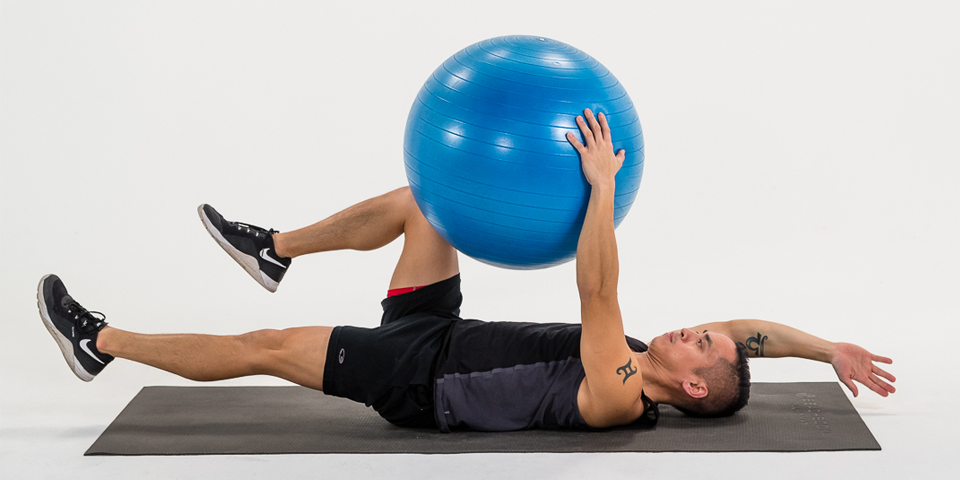
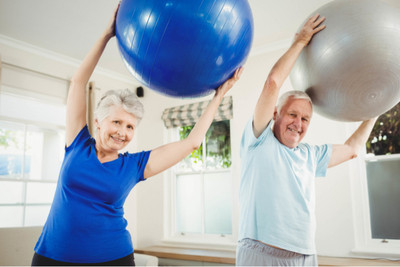


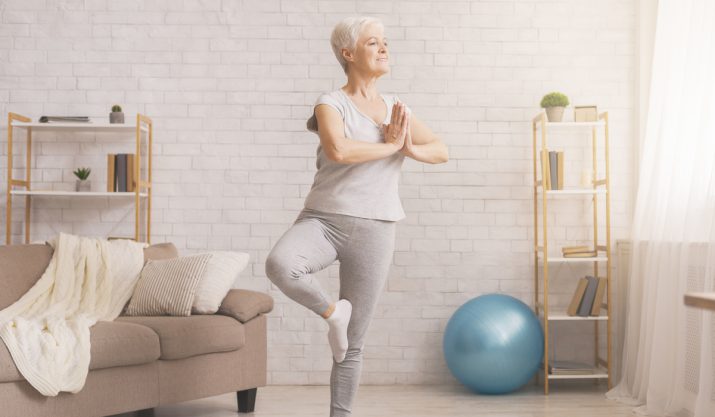






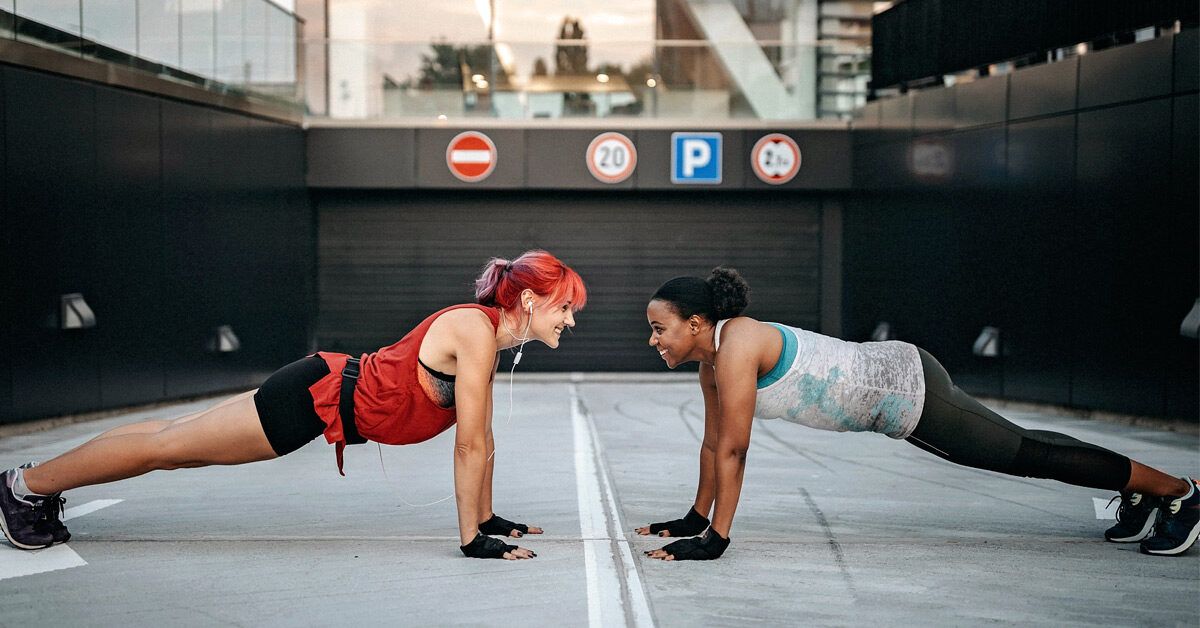



:max_bytes(150000):strip_icc()/GettyImages-1347857819-64e0b4dcbd314e828e4b40910ccfd08b.jpg)